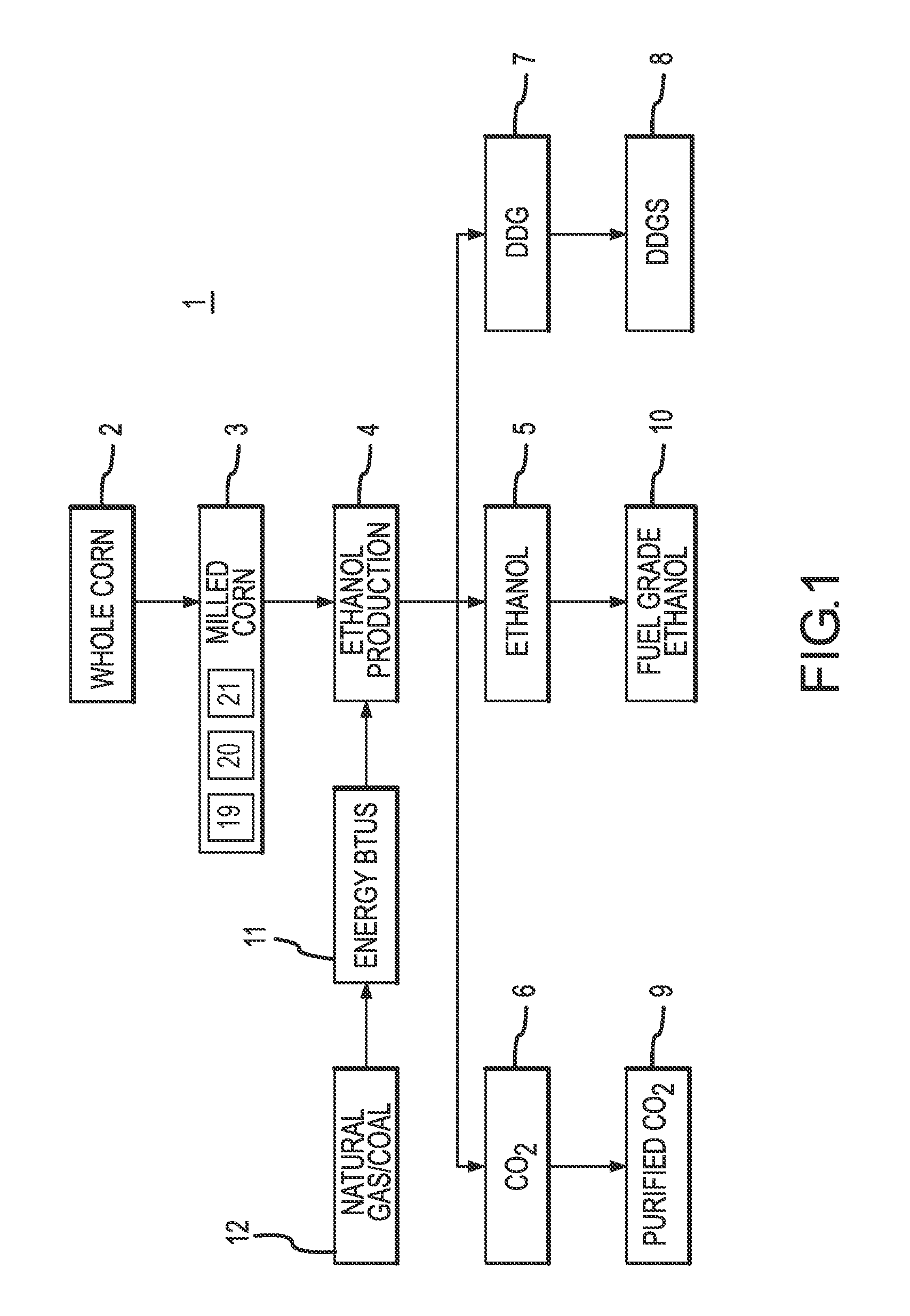Grain fraction endosperm recovery system
a technology of endosperm and grain fraction, which is applied in the field of grain fraction endosperm recovery system, can solve the problems of unresolved problems, saturated market for ddg (b>7/b>) by products, and inacceptable ddg (b>7/b>) as feed for poultry, fish and pet food, and achieves cost savings and reduces the weight of material
- Summary
- Abstract
- Description
- Claims
- Application Information
AI Technical Summary
Benefits of technology
Problems solved by technology
Method used
Image
Examples
example 1
Germ Wet Milling of Dry Milled Corn Germ
[0089]A broad object of embodiments of the invention is to process less than about 20% wt. / wt. of the entire grain kernel. As compared to conventional wet milling processes which process the whole or ground grain kernels, wet processing of the dry mill germ of grain resulting from the above described dry mill processes or other conventional dry mill processes confers the advantages of wet mill processing a much reduced weight of material which can achieve and overall cost savings, but additionally provides the advantage of producing a similar or better germ (21) quality (maximum amount of starch content on a dry mass basis of 10% wt. / wt. and containing a minimum of 40% oil on dry mass basis wt. / wt.) with significantly reduced soak periods. Moreover, germ resulting from embodiments of the invention and from the exemplary process described below can be further processed to extract food-grade oil.
[0090]In one exemplary process in accordance with ...
PUM
| Property | Measurement | Unit |
|---|---|---|
| temperature | aaaaa | aaaaa |
| temperature | aaaaa | aaaaa |
| temperature | aaaaa | aaaaa |
Abstract
Description
Claims
Application Information
 Login to View More
Login to View More - R&D
- Intellectual Property
- Life Sciences
- Materials
- Tech Scout
- Unparalleled Data Quality
- Higher Quality Content
- 60% Fewer Hallucinations
Browse by: Latest US Patents, China's latest patents, Technical Efficacy Thesaurus, Application Domain, Technology Topic, Popular Technical Reports.
© 2025 PatSnap. All rights reserved.Legal|Privacy policy|Modern Slavery Act Transparency Statement|Sitemap|About US| Contact US: help@patsnap.com



